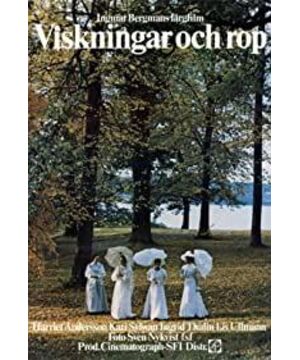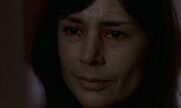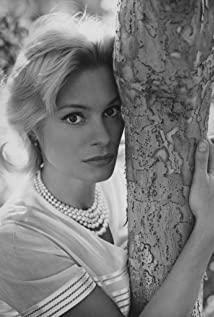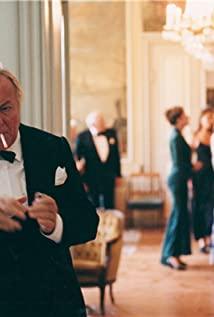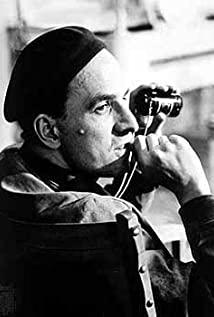——Ingmar Bergman
Bergman's image world
The Polish film master Kielovsky said that the hall of film saints in his mind is composed of Bergman, Fellini and Andrei Tal Built by the three Kowskis. This sentence is the origin of the "Holy Trinity of European Cinema" that people often say later. Forgive me presumptuously, if we use "like a poem as a dream" to summarize Tarkovsky and "like a dream" to locate the style of Fellini's images, then use "like a madness" to interpret Berg Mann's ultimate exploration of the secret world of the human heart, as well as his extreme descriptions of the pain of life and the fear of death, could not be more appropriate.
It is very interesting that the three masters also commented on each other. Bergman once commented on Tarkovsky as follows: "He created a new film language and captured life like a reflection and a dream." . And Fellini also once said: "I have only seen this movie (referring to "Wild Strawberries") once, but it is enough to realize what a great artist Bergman is. . . . Than is complimenting me." I think this is the mutual sympathy between the masters. On the other hand, some so-called artists nowadays, before and after the release of the film, in the smoke of the box office war, in the clear and dark tricks of the Eight Immortals crossing the sea, making the film a kind of market place As a means of making a living, as a gimmick and capital to enhance fame and fortune, I really do not know whether it is the sadness of film art or the sadness of the audience.
Bergman once said: "To make a movie is to jump into the abyss of one's childhood". In fact, the answer to this sentence can also be found in Fellini and others. Anyone who has a distinct personality and is dedicated to creating will have this experience, but the result of the experience is different. Fellini's impression of childhood in the film "I Remember" is a colorful and dream-like real feeling, while the animation master Hayao Miyazaki in "My Neighbor Totoro" depicts a childhood scene full of eBay. It can be seen that Bergman's childhood has terrifying and long painful memories like the abyss, which is reflected in many of his films. Because of this, he rarely watches the films he shoots. He said that it would be very depressing, even emotional, and he could not help trembling and crying, and he felt pitiful. Only because of this, not indulging in the success and pain of yesterday, not sticking to the old system, and challenging yourself, has made Bergman's film legend.
Bergman's film art gradually entered the ranks of the art temple, roughly starting in the 1950s, the film "Seven Seals" in dialogue with the god of death was a watershed in his artistic path, until the release of "Wild Strawberry" later. , "Still in the Mirror", "Cries and Whispers", "Magic Flute" and a series of excellent films, in these works, Bergman abandoned the early expression of social abstraction as a kind of antithesis of children's innocence. The destruction and evil of the adult world have turned into the excavation and exploration of human nature itself, as well as a sense of existential anger that expresses deep questioning of religion, expresses contemplation of sin and reconciliation, punishment and forgiveness, The call and suspicion of human relations and family affection, the ridicule and criticism of hypocrisy and greed. In Bergman's video world, the family provides people with protection, but also becomes a breeding ground for paralysis and hypocrisy; emotion, while becoming a refuge for the soul, also opens the door to loneliness and harm.
The human quartet
"Cry and Whisper" is one of Bergman's female-themed films, and it is also a controversial work. The film uses a lot of symbols and metaphors, and uses extremely monotonous but extremely strong picture colors. Rigorous yet not lacking in rhythmic beauty, the hierarchy tells the story of four women.
The color of the whole film is basically composed of red, white and black, with red as the main color. The walls, carpets, and furniture of the house in the film are all red. The small paragraphs in the story also start with red and end with red. Even the entire film starts with red subtitles and ends with red subtitles. For red, Bergman once said that red is the color of the interior, representing the deepest part of the soul. From this metaphor, it can be seen that the film is a film that penetrates into the depths of women's hearts and explores their softest and most unknown hidden world.
1. Agnes: The cry of loneliness and fear to the extreme,
Agnes, who has always been wearing a white dress, is the spokesperson of simplicity and purity. It is her critical danger that brings the three sisters together again. The regular and clear ticking of the clock at the beginning of the film reminds the passage of time. For Agnes, time is like the love of sisters. The more she calls, the faster it disappears. Memories may be a good choice to comfort fears, however, there are still mothers' lifeless face and their lonely appearance in the memories, no matter then or now, she will never understand her mother, just like her mother will never understand her Same. Obviously, loneliness is Agnes' only partner. She has been single due to the shadow of her childhood, perhaps because of habit, or because of her distrust of love. In the end, the disease changed her. When the god of death was approaching, she suddenly felt Love is the last straw before death.
In the film, whenever Agnes was tormented by illness, he would cry out hysterically, an undisguised cry of the most primitive and roughest tortured by great pain. It was both a call for life and a despair for death. As a faithful believer, Agnes' cry obviously has two meanings, one is a cry to God, and the other is a call to sisters' love. Obviously, neither of them has been answered, which also coincides with Bergman. The theme of the film is that the former is a questioning of religion, while the latter is a call for family affection and communication.
In the ultimate torture of religion and family, Bergman also dramatically arranged the plot of Agnes' resurrection, and used Agnes' mouth to say that the world has only eternal emptiness and coldness, and God and heaven are nothing but empty words. . However, what is indignant is that in the face of her death and resurrection, sisters Karin and Maria either added indifferent vicious words, or fled in fear, or the servant Anna opened her warm heart as always, letting Agnes' soul rest in peace.
2. Anna: A humble maid, a noble mother In the
film, Anna's role is the most special. She is the servant of the three sisters. Although her status is low and low, her soul is noble and pure. The only calm and warmth in the whole depressing icy atmosphere. The story doesn't tell much about Anna. It can be seen from her prayers that she once had a daughter, but she is no longer there.
Anna's lines are very few, and most of them are watching everything in silence. Even when Agnes was sick, she just said "she's here" repeatedly, and then undressed and held Agnes on her chest. It was her. The meticulous care gave Agnes the last ray of warmth in the world.
Anna's plump breasts have appeared many times in the film. Perhaps, this female character with a plump body, a low mentality and identity, but a noble and pure soul is the ideal motherhood prototype in Bergman's mind. And human-to-human communication, like Anna and Agnes, silences everything in openness and acceptance.
3. Maria: The frivolous and greedy pseudo-noble
Maria has always shown herself in a sexy low-cut long dress. The exposed breasts and red dress allude to her frivolity and desire. Taking care of Agnes was just a prevarication for Maria because of her lover's remarks. In fact, Maria, like her lover, disguised the indifference in her heart with a faint smile on the corner of her mouth. Whitewashed so-called nobility with cheap sympathy and tears. The two of them are mirror images of each other, exactly the same.
Maria has been favored by her mother since she was a child, and her married family can be described as happy, but she is dissatisfied with the status quo, courting her with sex, trying to water her withered soul, but with her selfish and indifferent character, sex can only stay in the game level, it is difficult to rise to the height of love. It is interspersed with a memory of Maria, in which he and his lover taunted each other, and then her husband discovered her betrayal in a powerless cover up. When faced with her husband's incompetence by suicide, she turned and left. Bergman's reenactment of this group of scenarios about the past shows Maria's hypocrisy and ruthlessness.
The film's handling of details can be described as meticulous, and by this means the psychology and character of the characters are revealed. When Maria took care of Agnes, she basically looked at it from a distance, always avoiding close contact, but pretending to ask for warmth, that kind of reluctant hypocrisy, that kind of hypocrisy in the bones of a woman was portrayed in Bergman's mirror image.
4. Karin: Karin, the trapped beast in the cage of lies,
should be the most rational of the three sisters. She wears a black floor-length dress with a high collar and locks like a shackle, shackled her body and soul. It's all lies" is the prophecy of her whole life. The paralysis of marriage and the sanctimoniousness of her husband made her full of stubborn prejudice against everything. She hated hypocrisy and indifference, but had to disguise herself with hypocrisy and indifference. She was like a hedgehog, while stinging others, He also hurt himself deeply.
The film is also interspersed with a memory of Karin, the hypocritical marriage life makes her almost crazy, marriage is not afraid of quarrels, but is afraid of this eternal "respect for each other" without love and hatred, Karin's marriage is like this, when she uses broken She inserted a glass piece into her lower body, and then smeared blood on her lips when she laughed wildly at her husband, what she showed was her long-suppressed, twisted soul.
There is a very ironic passage in the film. Maria, because of Agnes's fear after death, instinctively hopes to get Karin's understanding and love, and Karin is also tortured by long-term autism and self-abuse, eager to break the painful rut, Afraid of being hurt again and timid, it was this mutual need and temptation that allowed the two to have their first in-depth communication. When Bergman dealt with this set of shots, he disappeared the language and replaced it with music, which also coincides with a famous saying of Camus: "The real silence is not silence, but speech". Sadly, however, this communication is like an inflated bubble, the bigger it blows, the faster it bursts. When Maria needed to maintain her so-called elegance again, she immediately changed to another face, forgetting yesterday's closeness with Karin, while Karin condemned her gullibility in remorse, and wrapped herself even more. It's like an iron wall, and then I can't extricate myself from the pain in this iron wall.
Looking at the whole film, Bergman used exquisite film language and exquisite color effects to carefully create the inner world of the four women, and wrote a magnificent chapter of the bright and dark women's hearts, like a string quartet, sometimes Soothing, sometimes soaring, sometimes elegant, sometimes majestic, in the shouts and whispers, it highlights the theme of Bergman's films - there is no love in Bergman's films, only a passionate call for love.
View more about Cries & Whispers reviews


